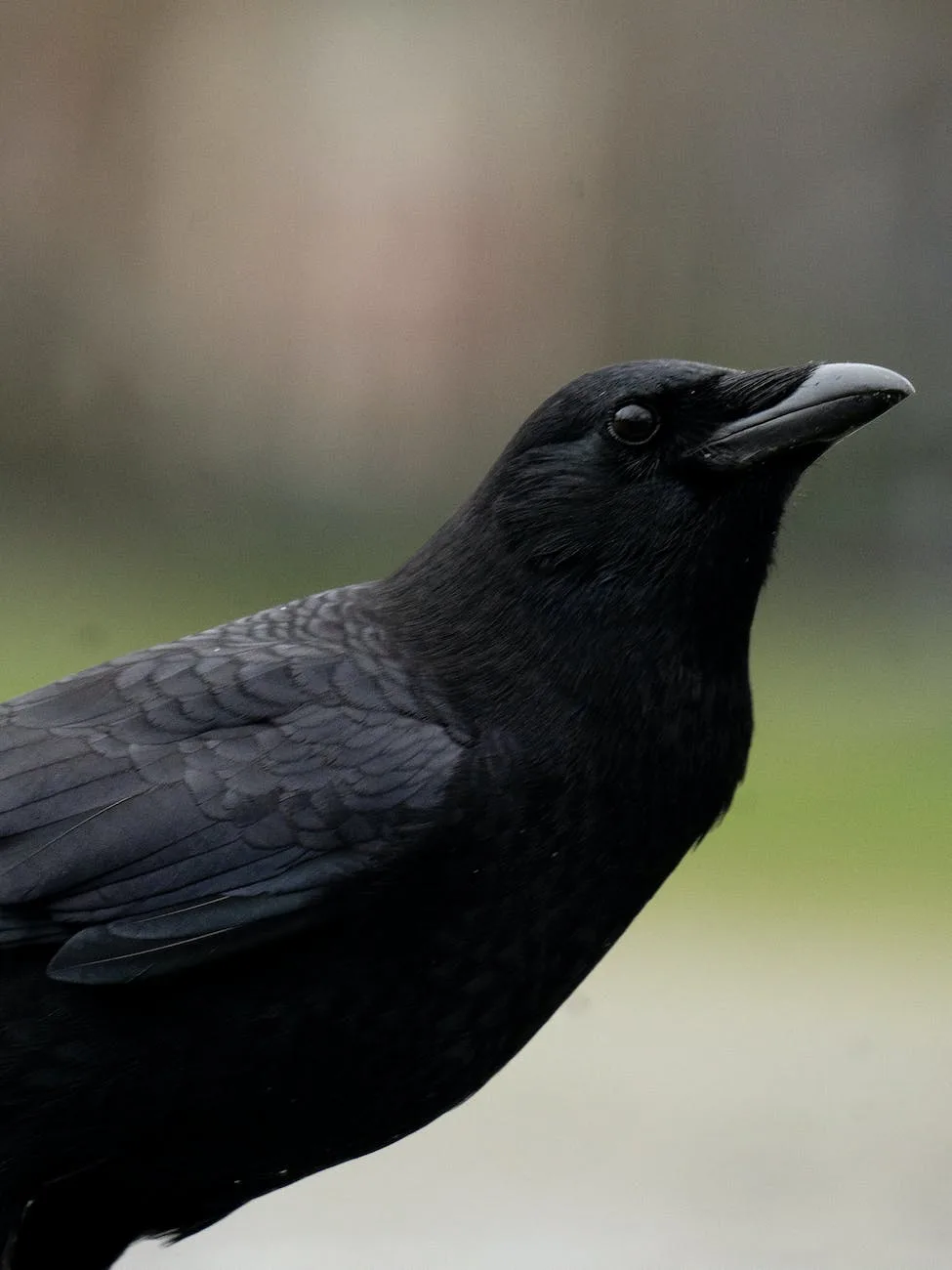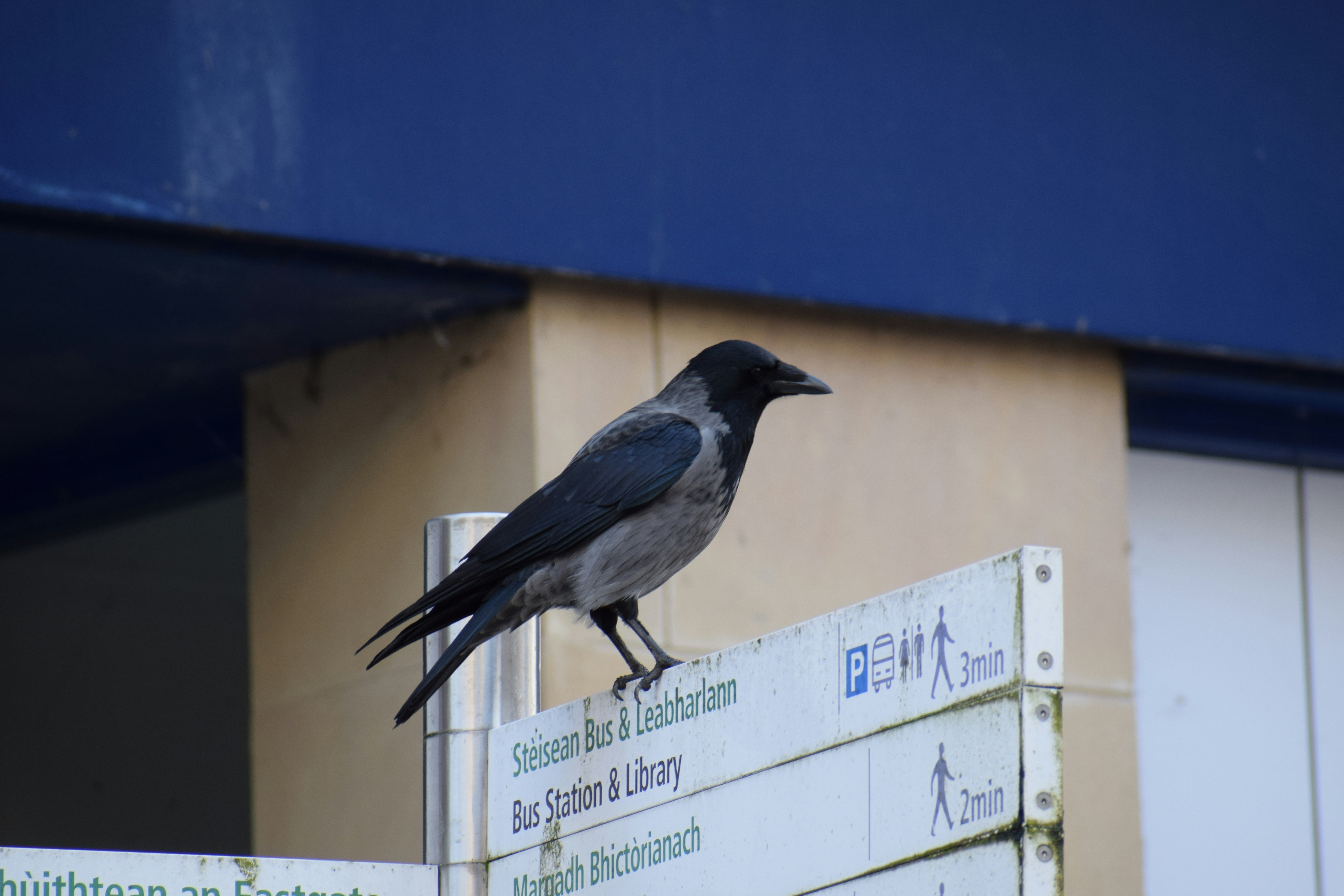Pacific Coasts Hidden Gem: Getting to Know the Sinaloa Crow
December 30, 2023 | by BlackCrow.com

Introducing the Sinaloa Crow
The Sinaloa Crow (Corvus sinaloae) is a fascinating species of black crow found along the Pacific coast of Mexico. Let’s delve into an overview of this remarkable bird and explore its habitat and distribution.
Overview of the Sinaloa Crow
The Sinaloa Crow, also known as the Pacific Crow, is a medium-sized member of the Corvidae family. It is endemic to the western coastal regions of Mexico, primarily in the state of Sinaloa. This crow species is highly adapted to the unique ecological conditions of its habitat, making it a remarkable avian species to study and appreciate.
With its glossy black plumage and strong, sharp beak, the Sinaloa Crow stands out as an impressive bird. It exhibits social behavior and is often spotted in small to large groups, especially during foraging and roosting activities. These crows are known for their intelligence and problem-solving abilities, which contribute to their survival in their specific habitat.
Habitat and Distribution
The Sinaloa Crow is primarily found in the coastal regions of the state of Sinaloa, located on the Pacific coast of Mexico. Within this region, it inhabits a variety of habitats, including tropical deciduous forests, coastal dunes, mangroves, and agricultural areas. The adaptability of this species allows it to thrive in both natural and human-modified landscapes.
The distribution of the Sinaloa Crow is limited to its endemic range along the Pacific coast of Mexico. It is not known to migrate significant distances, although some local movements in search of food or nesting sites may occur. The exact boundaries of its distribution within Sinaloa are still being studied and researched by ornithologists and conservationists.
Understanding the habitat and distribution of the Sinaloa Crow provides valuable insights into its ecological niche and the conservation measures required to protect this species. By preserving its coastal habitat and raising awareness about the importance of this unique crow, we can contribute to the long-term survival of the Sinaloa Crow population.
To learn more about other crow species and their characteristics, visit our articles on pied crow, white-necked raven, American crow, little crow, and northwestern crow.
Physical Characteristics
The Sinaloa Crow (Corvus sinaloae) is a unique and fascinating bird with distinct physical characteristics that set it apart from other crow species. This section will explore its size and appearance, as well as the unique features that make it easily identifiable.
Size and Appearance
The Sinaloa Crow is a medium-sized bird, measuring approximately 38 to 41 centimeters (15 to 16 inches) in length. It has a wingspan of around 78 to 82 centimeters (31 to 32 inches). The male and female Sinaloa Crows have similar sizes and appearances.
This crow species displays a predominantly black plumage, which is common among many crow species. However, it has a glossy sheen that enhances its overall appearance. The feathers on its body, wings, and tail are sleek and somewhat iridescent, reflecting shades of deep blue and purple in certain lighting conditions.
Unique Features of the Sinaloa Crow
The Sinaloa Crow possesses several unique features that distinguish it from other crow species. One notable feature is its large, sturdy bill. The bill is black, strong, and slightly curved, allowing the crow to forage for food effectively. Its powerful bill is well-suited for cracking open nuts, digging for invertebrates, and manipulating objects.
Another distinctive feature of the Sinaloa Crow is its eyes. They are relatively large, round, and feature a dark brown to black coloration. The eyes are highly expressive and provide excellent vision, enabling the crow to spot potential prey or threats from a distance.
Additionally, the Sinaloa Crow has strong, agile legs and feet. The legs are black, and the feet are equipped with sharp, curved claws that aid in perching and grasping objects.
Overall, the Sinaloa Crow’s physical characteristics contribute to its adaptability and survival in its habitat. Its sleek plumage, robust bill, keen eyesight, and agile feet make it well-suited for various foraging and hunting behaviors.
As we delve further into the behavior and ecology of the Sinaloa Crow, we will gain a deeper understanding of how these physical characteristics play a role in its daily life and survival.
Behavior and Ecology
The behavior and ecology of the Sinaloa Crow are fascinating to explore. Understanding their diet and feeding habits, as well as their breeding and nesting behavior, provides valuable insights into the life of this intriguing bird.
Diet and Feeding Habits
The Sinaloa Crow has a diverse diet that consists of both plant and animal matter. These crows are opportunistic feeders, adapting their diet based on the availability of food in their habitat. Their diet primarily includes fruits, seeds, insects, small vertebrates, and carrion.
| Food Sources |
|---|
| Fruits |
| Seeds |
| Insects |
| Small vertebrates |
| Carrion |
Sinaloa Crows are known to forage on the ground, searching for food in various habitats such as forests, coastal areas, and agricultural fields. They are intelligent birds that have been observed using tools to extract food from hard-to-reach places. This behavior showcases their problem-solving abilities and adaptability.
Breeding and Nesting Behavior
During the breeding season, which typically occurs between February and June, Sinaloa Crows form monogamous pairs. These pairs establish territories and build nests in trees, often selecting tall trees for better protection against predators.
The nests of Sinaloa Crows are constructed using twigs, branches, and other plant materials. They are sturdy structures lined with softer materials like grass and feathers. The female is primarily responsible for building the nest, while the male assists by providing materials.
Once the nest is built, the female lays a clutch of 2-4 eggs. Both parents take turns incubating the eggs, which typically hatch after an incubation period of around 18-20 days. After hatching, the parents work together to feed and protect the chicks until they fledge, which usually occurs at around 4-5 weeks of age.
It’s important to note that the Sinaloa Crow, like many other bird species, plays a vital role in maintaining ecological balance by consuming insects and assisting in seed dispersal. Understanding their behavior and ecology helps us appreciate their ecological significance and contributes to conservation efforts.
By exploring the diet and feeding habits, as well as the breeding and nesting behavior of the Sinaloa Crow, we gain a deeper understanding of this remarkable bird’s role in the ecosystem. To learn more about other crow species, such as the White-necked Raven or the Australian Raven, visit our blog.
Conservation Status
The Sinaloa Crow (Corvus sinaloae) is a bird species found along the Pacific coast of Mexico. While it is not currently classified as endangered, its population faces various threats and challenges. Conservation efforts are in place to ensure the long-term survival of this unique species.
Threats and Challenges
The Sinaloa Crow faces several threats that impact its population and habitat. These threats include:
- Habitat Loss: Urbanization, agricultural expansion, and deforestation have led to the loss and fragmentation of the Sinaloa Crow’s natural habitat. As their habitat diminishes, the birds are forced into smaller, isolated areas, which can negatively affect their breeding and foraging patterns.
- Human Disturbance: The encroachment of human activities, such as tourism and development, can disrupt the natural behavior of the Sinaloa Crow. Disturbances around nesting sites and foraging areas can lead to reduced breeding success and overall population decline.
- Predation: Nest predation by other bird species and mammals poses a significant threat to the Sinaloa Crow. Ground-nesting birds like the Sinaloa Crow are particularly vulnerable to predation by feral cats, dogs, and other introduced predators.
- Climate Change: The effects of climate change, including rising temperatures and changes in precipitation patterns, can impact the availability of food and nesting resources for the Sinaloa Crow. These changes in the environment can disrupt the delicate balance necessary for their survival.
Conservation Efforts
Conservation efforts are underway to protect the Sinaloa Crow and its habitat. These efforts include:
- Habitat Preservation: Establishing protected areas and promoting sustainable land management practices are crucial for the conservation of the Sinaloa Crow. Preserving and restoring their natural habitat ensures that the birds have sufficient resources for breeding, foraging, and nesting.
- Research and Monitoring: Conducting research on the behavior, ecology, and population dynamics of the Sinaloa Crow helps scientists and conservationists better understand the species’ needs and develop effective conservation strategies. Monitoring programs track population trends and identify areas that require immediate conservation action.
- Public Awareness and Education: Raising awareness among local communities, policymakers, and the public about the importance of conserving the Sinaloa Crow is key to its long-term survival. Educational programs and campaigns can promote responsible tourism practices, reduce disturbance to nesting sites, and encourage habitat conservation.
- Collaborative Conservation Efforts: Collaboration between government agencies, non-profit organizations, researchers, and local communities is essential for effective conservation. By working together, stakeholders can pool resources, share knowledge, and implement conservation measures more efficiently.
Through these conservation efforts, the Sinaloa Crow has a better chance of thriving in its natural habitat. It is important to continue monitoring the species and adapting conservation strategies as new challenges arise. By protecting the Sinaloa Crow, we contribute to the preservation of biodiversity and the ecological balance of the Pacific coast of Mexico.
Interesting Facts about the Sinaloa Crow
The Sinaloa Crow, also known as Corvus sinaloae, is a fascinating bird with several interesting facts worth exploring. Let’s delve into its cultural significance and notable behaviors or adaptations.
Cultural Significance
The Sinaloa Crow holds cultural significance for the communities residing along the Pacific coast of Mexico, where it is predominantly found. Its distinct call and presence in the natural landscape have inspired various cultural expressions, including art, literature, and traditional stories. The Sinaloa Crow’s cultural significance highlights the deep connection between nature and human societies.
Notable Behaviors or Adaptations
The Sinaloa Crow exhibits several notable behaviors and adaptations that make it unique among its avian counterparts.
- Social Behavior: Sinaloa Crows are highly social birds, often seen foraging, roosting, and nesting in large groups known as rookeries. These rookeries can consist of hundreds or even thousands of individuals. The social nature of the Sinaloa Crow allows for cooperative foraging and protection against predators.
- Tool Usage: Like other members of the crow family, the Sinaloa Crow has demonstrated remarkable tool-using abilities. They have been observed using sticks and other objects to extract prey hidden in crevices or to access hard-to-reach food sources. This behavior showcases their problem-solving skills and cognitive abilities.
- Adaptation to Urban Environments: The Sinaloa Crow has shown a remarkable ability to adapt to urban environments, thriving in cities and towns along the Pacific coast of Mexico. This adaptability to human-altered landscapes is a testament to their resilience and ability to exploit new food sources and nesting sites.
- Feeding Strategies: Sinaloa Crows employ various feeding strategies depending on the availability of food. They are opportunistic omnivores, feeding on a wide range of items including fruits, seeds, insects, small vertebrates, and carrion. Their ability to adapt their diet based on seasonal and environmental conditions contributes to their survival in diverse habitats.
- Vocalizations: The Sinaloa Crow is known for its distinct vocalizations, including a variety of calls, caws, and vocal mimicking. They use these vocalizations for communication within their social groups, establishing territories, and signaling potential threats.
Understanding the cultural significance and notable behaviors or adaptations of the Sinaloa Crow provides a deeper appreciation for this unique bird species. Its presence along the Pacific coast of Mexico adds to the rich biodiversity of the region and serves as a reminder of the interconnectedness between humans and the natural world.
RELATED POSTS
View all


